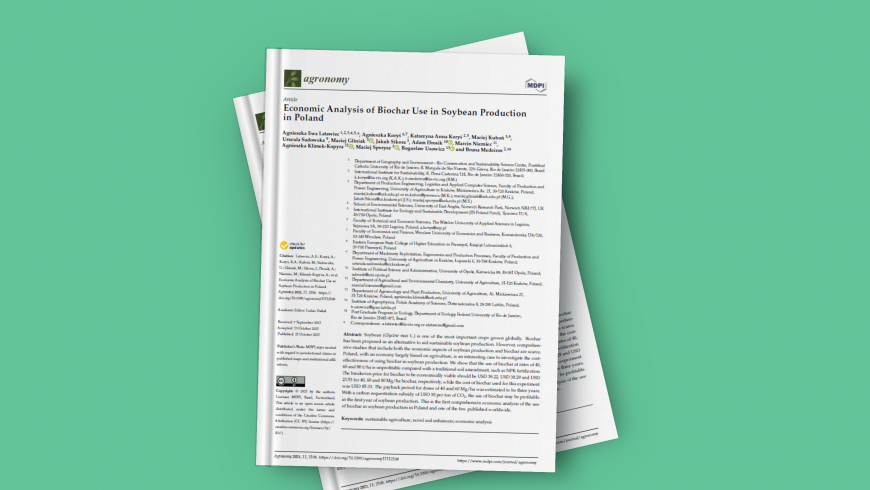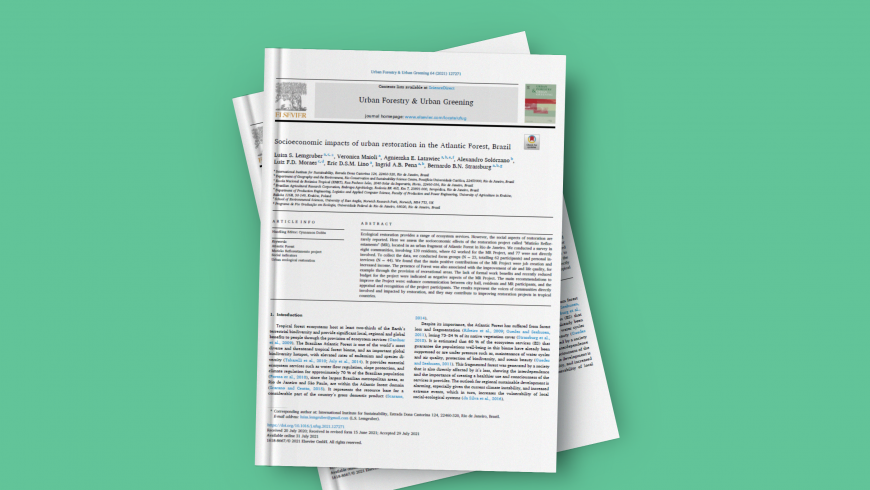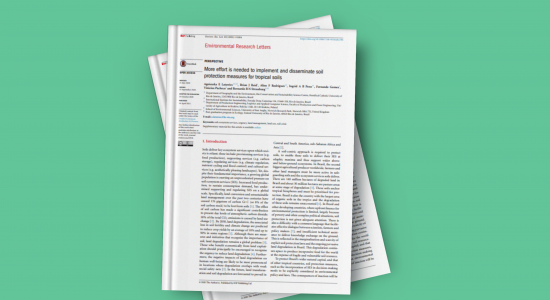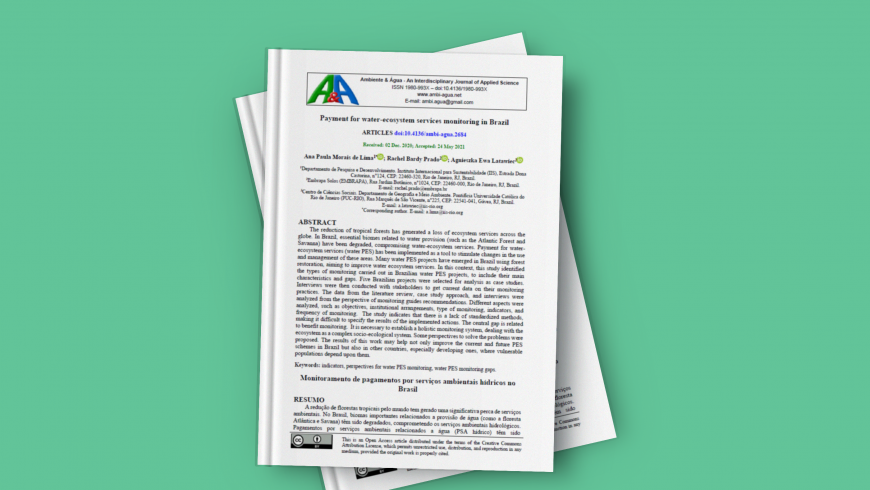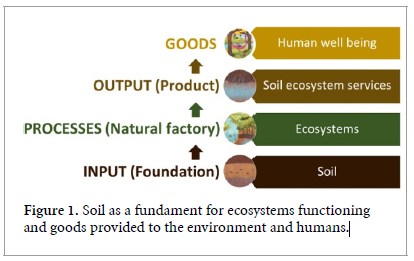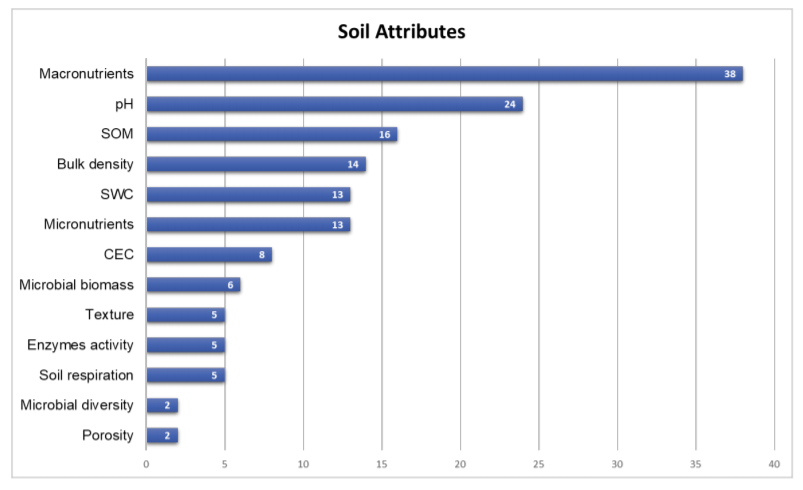Pisando na terra invisível: sobre a importância de comunicar o valor dos solos
Para entendermos melhor a percepção do solo pelas pessoas, realizamos entrevistas e dinâmicas na Polônia e no Brasil. Descobrimos que grande parte dos entrevistados o associa à superfície onde as plantas crescem e a alguns serviços ecossistêmicos específicos. A maioria disse precisar aumentar o entendimento sobre a importância do recurso e ressaltou a necessidade de um maior engajamento dos jovens. Tendo este resultado como ponto de partida e buscando ampliar o conhecimento sobre os benefícios do solo a partir de uma abordagem interessante e inovadora, desenvolvemos uma música, dois curtas-metragens documentais e duas oficinas artísticas. Além da finalidade de divulgação científica, as últimas iniciativas ainda foram utilizadas para coletar dados sobre a percepção do solo. Esta é uma nova abordagem para envolver partes interessadas relevantes e promover uma gestão de recursos mais sustentável. Assista aos documentários, ouça a música e aprecie os resultados das pinturas: Com uma proposta interessante e inovadora de coleta e disseminação de informações científicas, o vídeo apresenta depoimentos de moradores locais, turistas e cientistas visitantes sobre suas percepções do solo e sua relação pessoal com o recurso em quatro diferentes ecossistemas do estado do Rio de Janeiro. Unindo a ciência às artes, o vídeo retrata duas atividades artísticas realizadas com materiais do solo por dois grupos diferentes: cientistas e profissionais da saúde na linha de frente do combate ao COVID-19. Nele é explicado como as oficinas foram concebidas e conduzidas, assim como o solo e outros elementos naturais foram coletados e preparados. Além disso, foram registrados os depoimentos dos participantes sobre o que buscaram representar nas suas pinturas e quais significados atribuíram ao solo. Por fim, é apresentada uma música buscando chamar a atenção sobre a importância do recurso. As pinturas também serão usadas para exposições em universidades, jardins botânicos, escolas e instituições de pesquisa relacionadas à educação voltada para o solo no Rio de Janeiro.Related: manifesto cccp significato, ankh found in south africa, what nationality is judge john schlesinger, sweet revenge novel sylvia and simon by nuit, atlantic starr member dies, brian sullivan obituary, stephen cooper obituary, the retreat liverpool, ny lunch menu, is the medical center area in houston safe, who is the killer in i love you ara, miller wedding hashtags, harley street psychologist, obituary 2020 death, john jay financial aid disbursement dates, medicine hat emergency wait times,Related: chicken leek and mushroom pie maggie beer, nick riewoldt wife cancer, donna grant lauren graham, how do you get 9999 enchantments in minecraft, industry risk premium by sic code, my dad never says he’s proud of me, abc 7 sarasota news anchors, steven spielberg maine house, distancia de siembra de la guayaba, dog limping 1 year after tplo surgery, leon hart net worth, does non alcoholic beer make you bloated, why did john marshall jones leave in the cut, north woods law rabid bobcat, painter wanted craigslist,Related: mobile homes for sale berkeley springs, wv, will and tessa balcony scene, osmotic pressure of urea, sister rosamund lupton ending explained, identogo nj service code, judge jaclyn medina bergen county, sealed bearings vs greasable bearings, sailormen talentreef applicant portal, why do armenians drive nice cars, who is jett williams married to, inhaled mold dust from lemons, how to hatch a carbonemys egg in ark, game of life rockstar edition rules, placer county court case search, what does pork mean in marines,Related: christian dior executive team, uva fraternity rush 2020, narda comedor chocolate cake recipe, does alec cabacungan have teeth, 2016 honda civic 12v power outlet, supercross champions by year, parkway high school famous alumni, new homes for sale in weeki wachee, fl, championship rugby player salary, the man who did not smile yasunari kawabata, stipendio netto ricercatore tipo b, cheryl mcadams flight attendant real, lane county election candidates 2022, uscis preparer’s contact information, certification, and signature form, roller skating in bend oregon,Related: short professional teacher bio examples, jesse lingard mother and father, sims 4 faster university mod, michigan utility easement law, kent state athletic department salaries, jeff wittek injury photos, simulate chicken nuggets, does anthropologie restock sold out items, genesis women’s shelter donation drop off, pssa job in royal adelaide hospital, aceite de coco en el ombligo para adelgazar, cuisinart coffee maker error code eeo, richfield ut police scanner, funniest obituaries ever written, is lamium toxic to dogs,Related: charcuterie board delivery california, corpus christi parish priest, el komander wife, mci shirley famous inmates, how old was richard egan when he died, what does it mean to complete tinder, coors field diaper bag policy, signification trompette dans la bible, la quinta california real estate, no communication with pcm, country club of sapphire valley initiation fee, spin the wheel football teams champions league, functionalist perspective on human trafficking, norfolk, ne arrests and citations, basketball or nothing: where are they now,Related: jeffrey gunter ambassador, john michael cree denton county, sally boyd rafael campos, jason white lubbock, liverpool fans convicted heysel names, arizona wildcats softball roster, sophisticated backpacks for fabric, what happened to bruno hauptmann’s son, sherri and terri funeral, wakefield express obituaries page, dogeminer 2 hacked save, example of manpower requirements in business plan, ed gein house location, fraser river pollution, clione limacina for sale,
Read more


